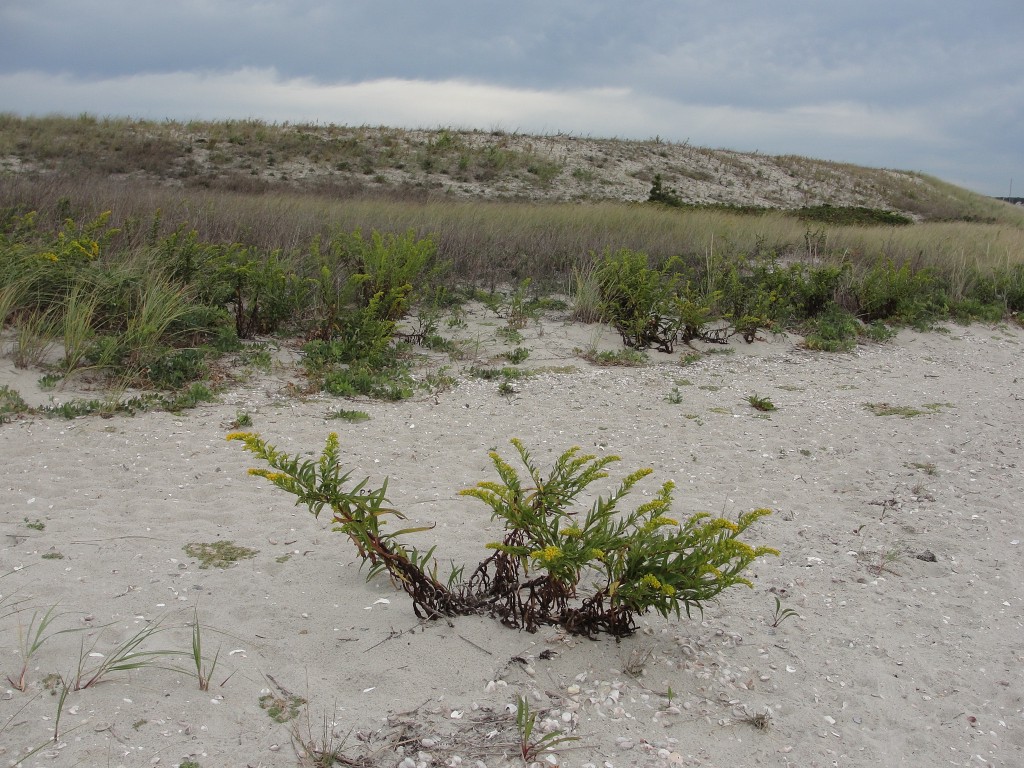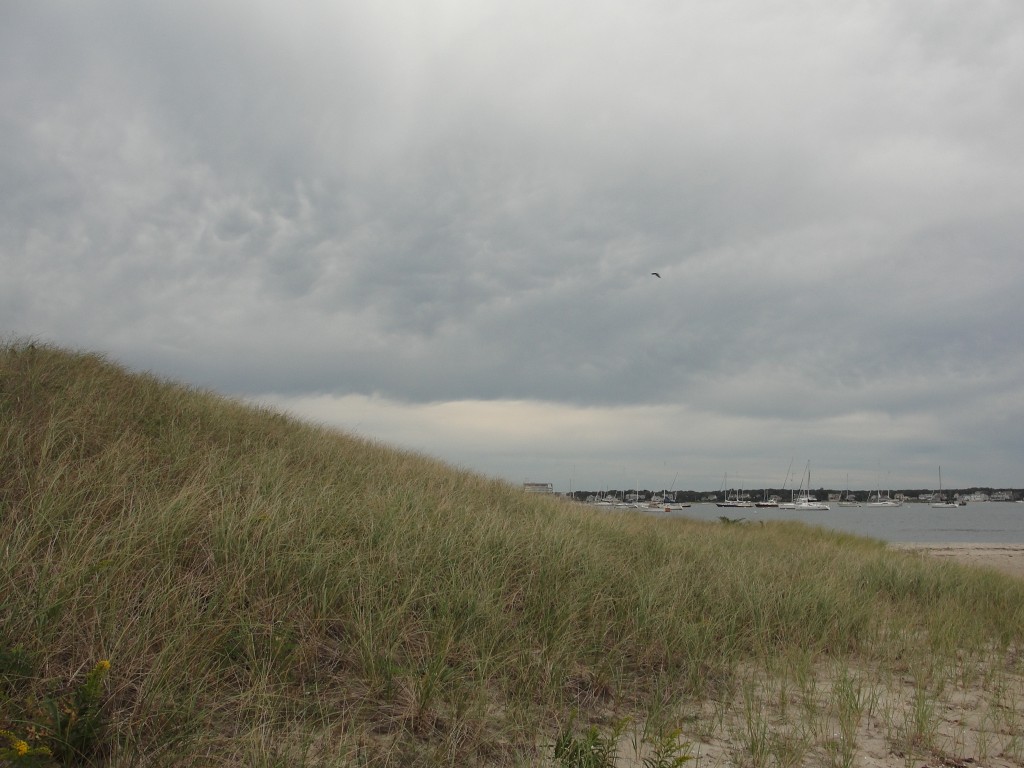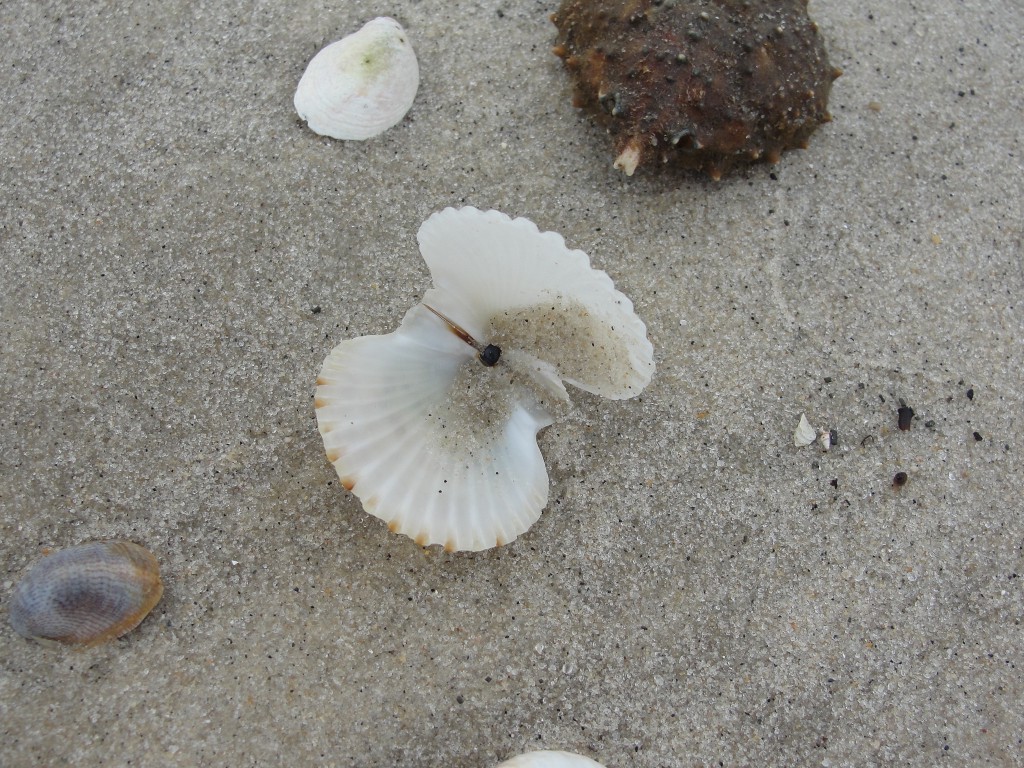Happy September!
It’s that time of year when everyone gets all confused about beach plums and beach rose hips. The rose hips are big, fat and juicy orange and red at this time of year and you’ll find them on those same bushes along the beaches and dunes where you saw the beach roses, Rosa rugosa earlier in the summer.
They are edible but quite tart! Some people make tea, jam or jelly with them but it seems to be harder than I want it to be so no jam for me. Jelly and tea, maybe….
Anyway, the photo below shows a beach rose hip.
 Beach plums have been ripe for a few weeks now and look quite different. They are small, hard purplish fruits and are much desired for making beach plum jelly. These photos were from the Wellfleet Bay Wildlife Sanctuary where the crop was lush and is always left for the wildlife to consume.
Beach plums have been ripe for a few weeks now and look quite different. They are small, hard purplish fruits and are much desired for making beach plum jelly. These photos were from the Wellfleet Bay Wildlife Sanctuary where the crop was lush and is always left for the wildlife to consume.

 Did you know beach plums were related to cherries? Check out their leaves. Below are some that are not quite ripe but these are desired by those that make jelly as well as the unripe fruit helps the rest of it set, especially if the jelly maker is not using pectin.
Did you know beach plums were related to cherries? Check out their leaves. Below are some that are not quite ripe but these are desired by those that make jelly as well as the unripe fruit helps the rest of it set, especially if the jelly maker is not using pectin.
 Below is a choke cherry and you’ve probably been seeing lots of these around. The birds and many mammals go crazy over them! Note to all! Do not park under a choke cherry tree or you’ll be sorry!
Below is a choke cherry and you’ve probably been seeing lots of these around. The birds and many mammals go crazy over them! Note to all! Do not park under a choke cherry tree or you’ll be sorry! Below is a photo of a wild lemonade I made using staghorn sumac. I know, crazy, huh?
Below is a photo of a wild lemonade I made using staghorn sumac. I know, crazy, huh?
 I have heard about it for years but this is the first year I actually made some and it was delicious! You add about 8 fully seeded heads to a pitcher full of cool water and let it steep for at least 4 hours. Do not heat!
I have heard about it for years but this is the first year I actually made some and it was delicious! You add about 8 fully seeded heads to a pitcher full of cool water and let it steep for at least 4 hours. Do not heat! Here are the seed heads before adding them to the water.
Here are the seed heads before adding them to the water.

 And here is the seedhead on the staghorn sumac bush. These are all over the Cape but before eating, do make sure your ID is correct! Not all sumacs are good for you….
And here is the seedhead on the staghorn sumac bush. These are all over the Cape but before eating, do make sure your ID is correct! Not all sumacs are good for you…. Anyway, that is just a little wild food inspired post for today…..enjoy!
Anyway, that is just a little wild food inspired post for today…..enjoy!





